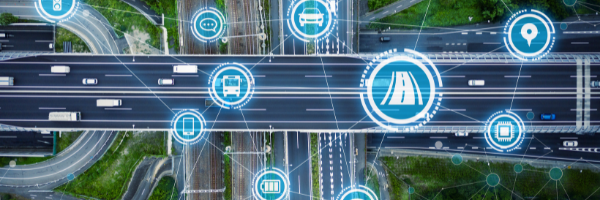Will Infrastructure Investment Pave The Way To A Stronger Economy
In November 2021, Congress passed the Infrastructure Investment and Jobs Act, a roughly $1 trillion package that reauthorized existing programs and provided more than $550 billion in new funding over the next five years to help upgrade aging U.S. transportation, water, power generation, and communication systems.1 The American Society of Civil Engineers applauded the bipartisan legislation, calling it a significant down payment on the $2.5 trillion in deficiencies identified in the industry group's 2021 Report Card for America's Infrastructure.2
The Act aims to improve public safety and grease the wheels of commerce by making a historic federal investment in physical infrastructure. This large injection of funds is likely to affect how many Americans commute, travel, transport goods, access the Internet, power homes and buildings, and more, with implications for communities, businesses, industries, and the economy.
Where the Money Goes
The new spending is a combination of targeted funds for overdue repair projects and forward-looking programs intended to make the nation's critical infrastructure assets more resilient to climate risks.3 Here's an overview of the Act's allocated funds:
- $110 billion to fix deteriorating roads and bridges, and other major surface-transportation projects
- $66 billion to pay for passenger and freight railway maintenance, modernization, and expansion, primarily to overhaul Amtrak and make rail travel a reliable alternative to driving or flying between more U.S. cities
- $65 billion to build out broadband Internet in underserved areas and subsidies to help lower-income households pay for high-speed Internet access
- $65 billion to update the electric grid and help protect it from severe weather and cybersecurity threats
- $55 billion to help ensure access to clean drinking water, remove lead service lines, and upgrade wastewater systems (another $8 billion goes toward addressing dwindling water supplies in the West)
- $47 billion to help states and cities prepare for and defend against more frequent and destructive storms, droughts, wildfires, and other climate impacts
- $42 billion to expand and upgrade airports, ports, and border-crossing stations, measures that are sorely needed to shore up supply-chain weaknesses
- $39 billion to repair and revamp public transit and make it more accessible to the elderly and disabled
- $21 billion to enhance public health and create jobs by cleaning up abandoned mines and oil and gas wells, polluted waterways, and contaminated superfund sites
- $11 billion to improve highway and pedestrian safety and support research
- $7.5 billion to build out a network of electric vehicle charging stations plus $7.5 billion for low-emission school buses and ferries
- $1 billion to reconnect communities negatively affected by past infrastructure projects
Anticipating the Impact
Transportation funds are normally allocated to states according to a formula based on population, gas-tax revenue, and other factors, and each state typically decides how to spend the money. Most of the new funding will be distributed under this traditional formula, but $120 billion will be awarded through dozens of new competitive grant programs.4 The Transportation Department will select recipients from applications submitted by state and local governments, and Congress will have direct oversight, so lawmakers can monitor projects and call hearings to assess the results. It's likely to take at least six months to pass out the money, finalize plans, and kick off projects — and timelines could run longer for grant programs.
Moody's Analytics projects that the law's economic impact will peak in about five years and fade as spending tails off, creating an estimated 556,000 jobs and raising U.S. output by 0.5% by year-end 2026. Other projections vary, but economists tend to agree that greater infrastructure spending eases worker mobility and the transportation of goods, providing a boost to labor productivity, business efficiency, and economic growth.5
The additional infrastructure spending will be partially paid for by new revenue and unspent COVID-19 relief funds. However the Congressional Budget Office found that the Act would add $256 billion to budget deficits over the next decade, so borrowing to cover the difference could offset some of the law's economic benefits.6
1, 5) The Wall Street Journal, November 6, 2021
2) American Society of Civil Engineers, 2021
3) The New York Times, August 10, 2021; White House Fact Sheet, November 6, 2021
4) The Wall Street Journal, November 7, 2021
6) Congressional Budget Office, August 9, 2021
Prepared by Broadridge Advisor Solutions Copyright 2022.


